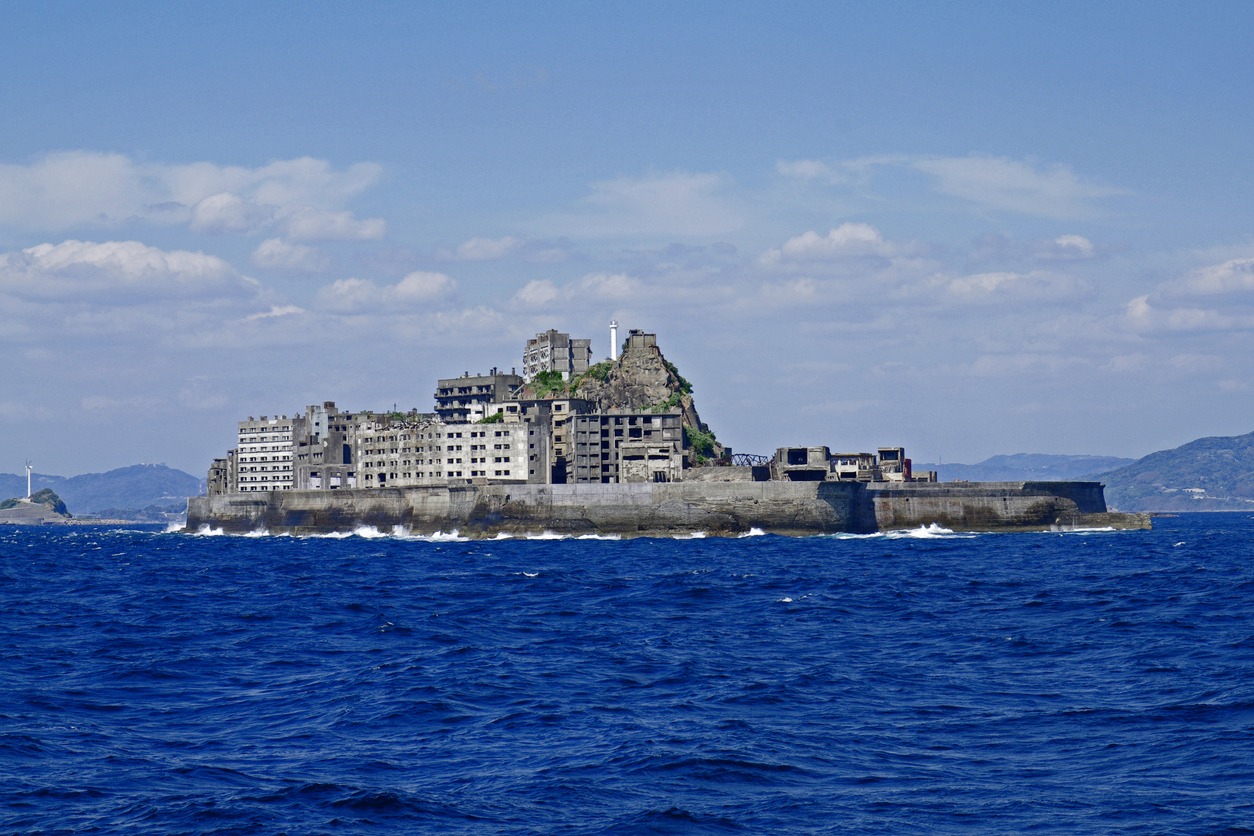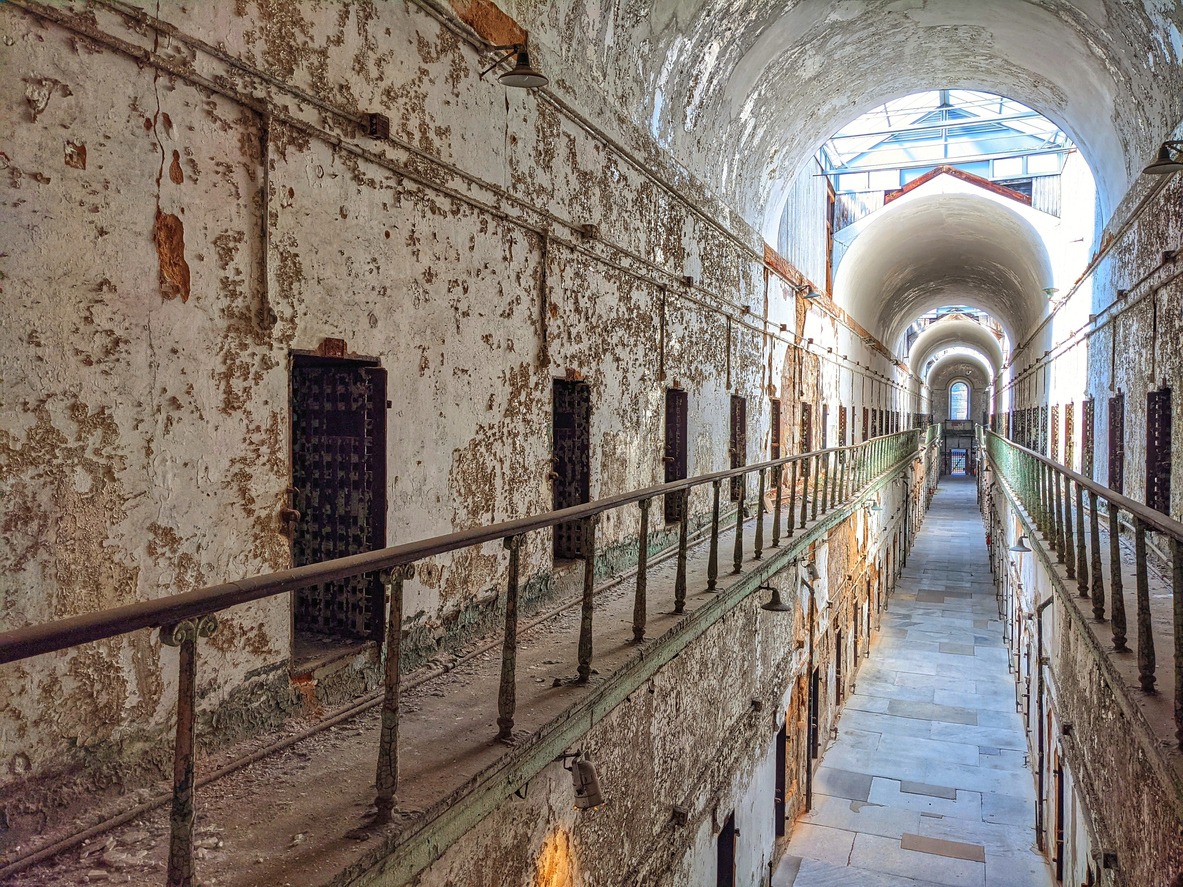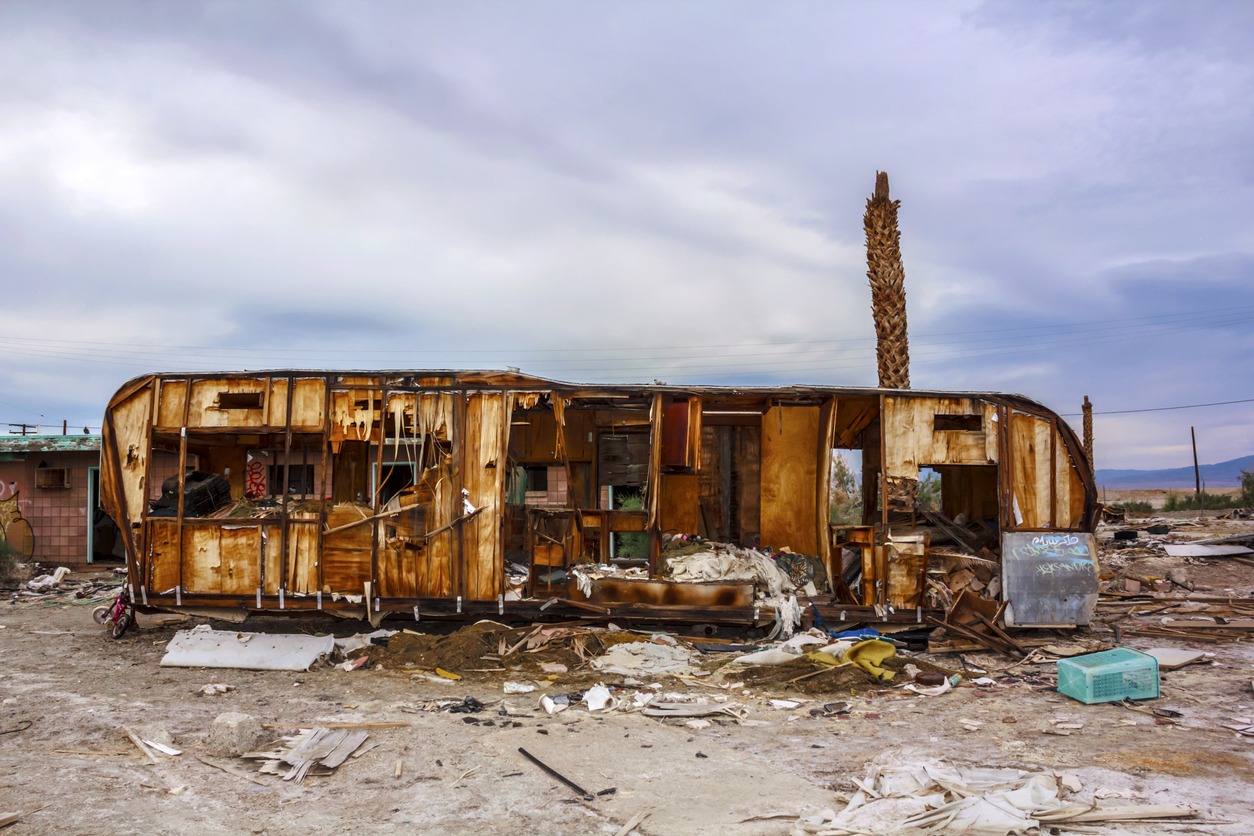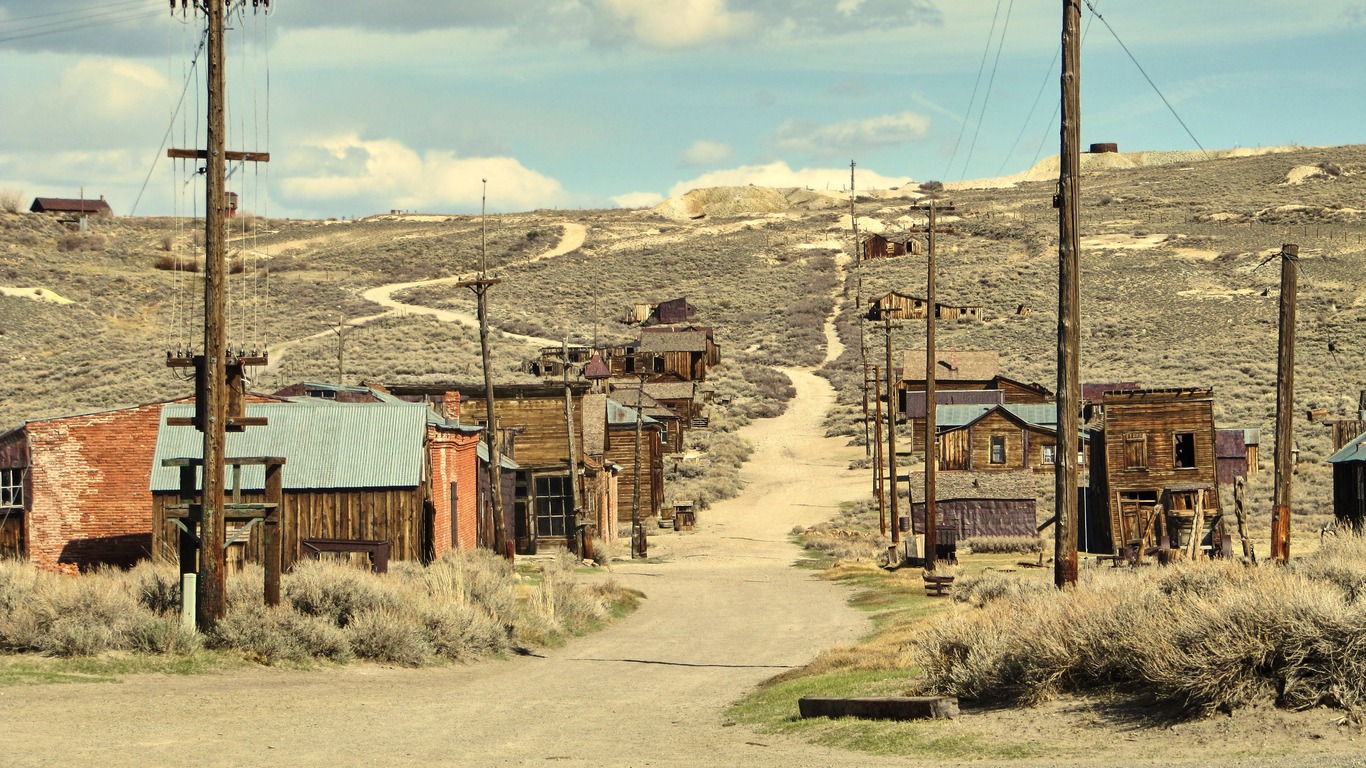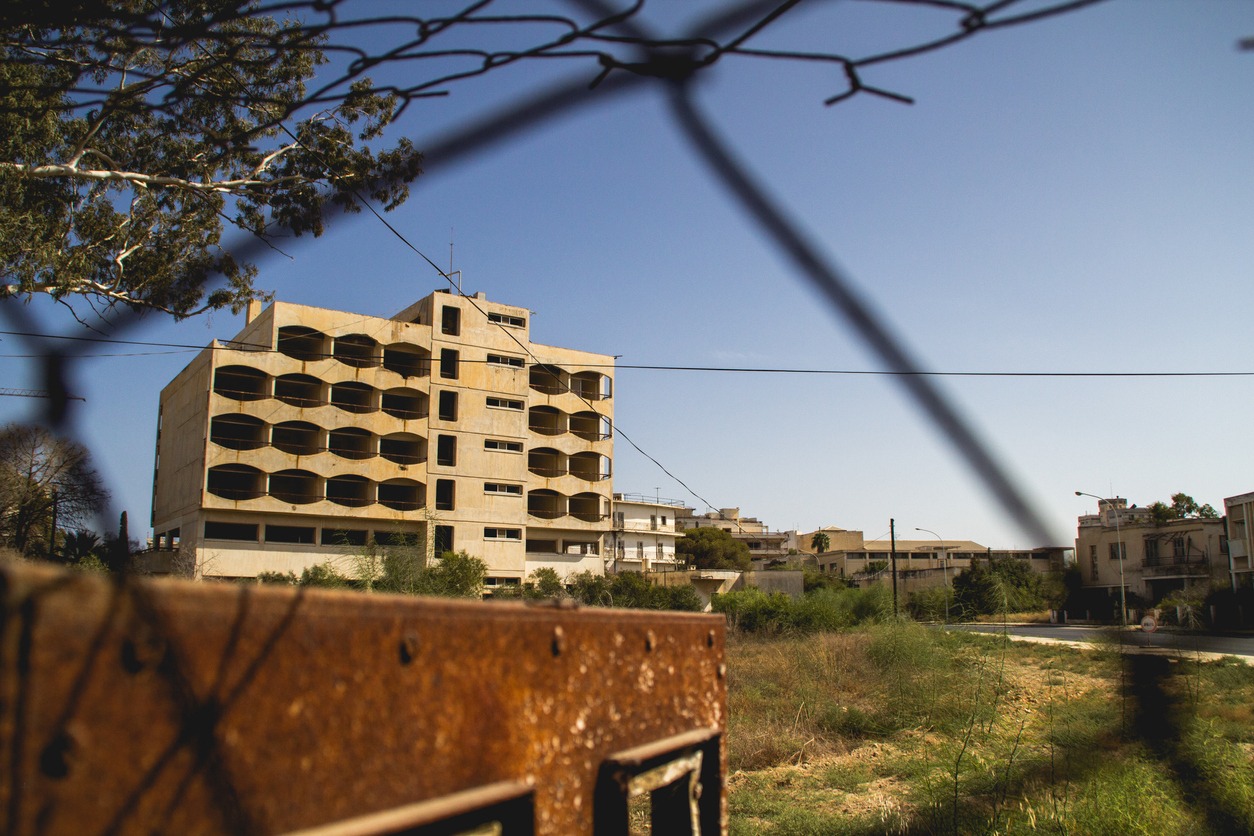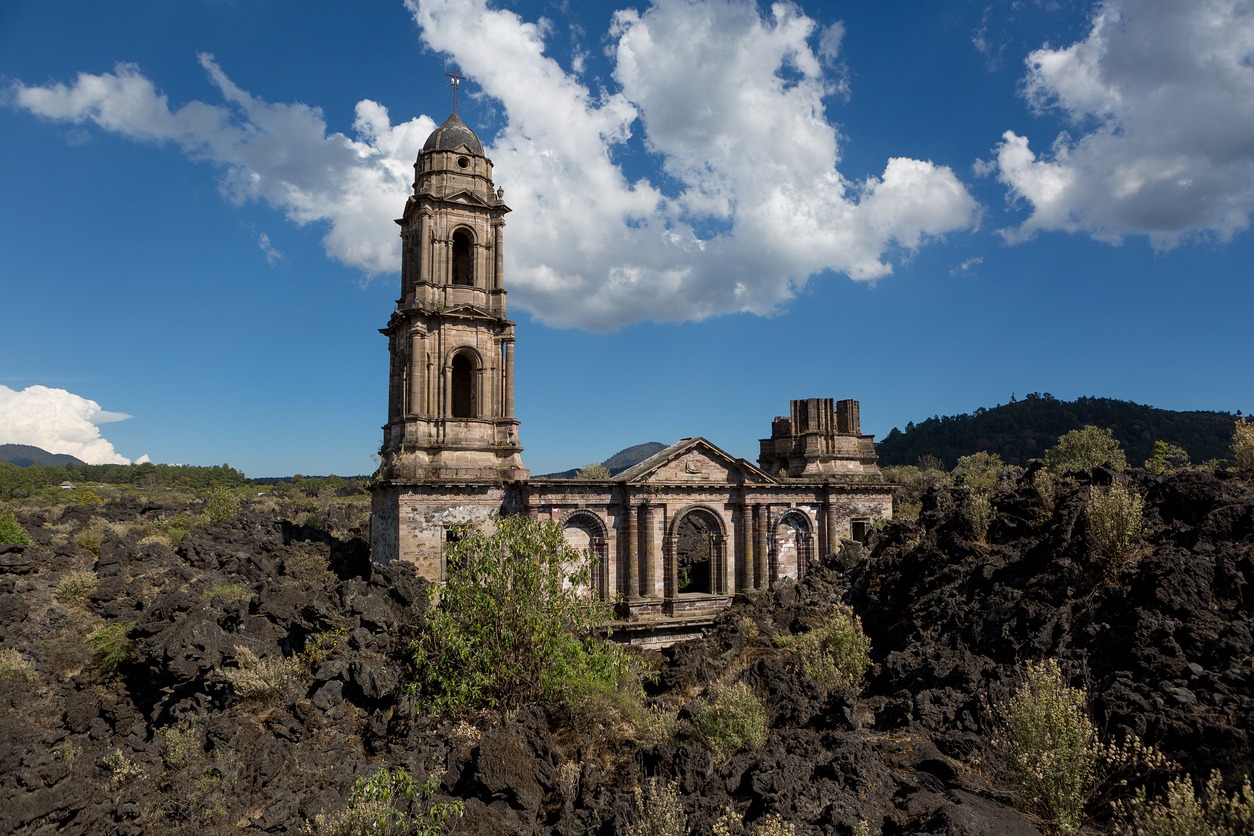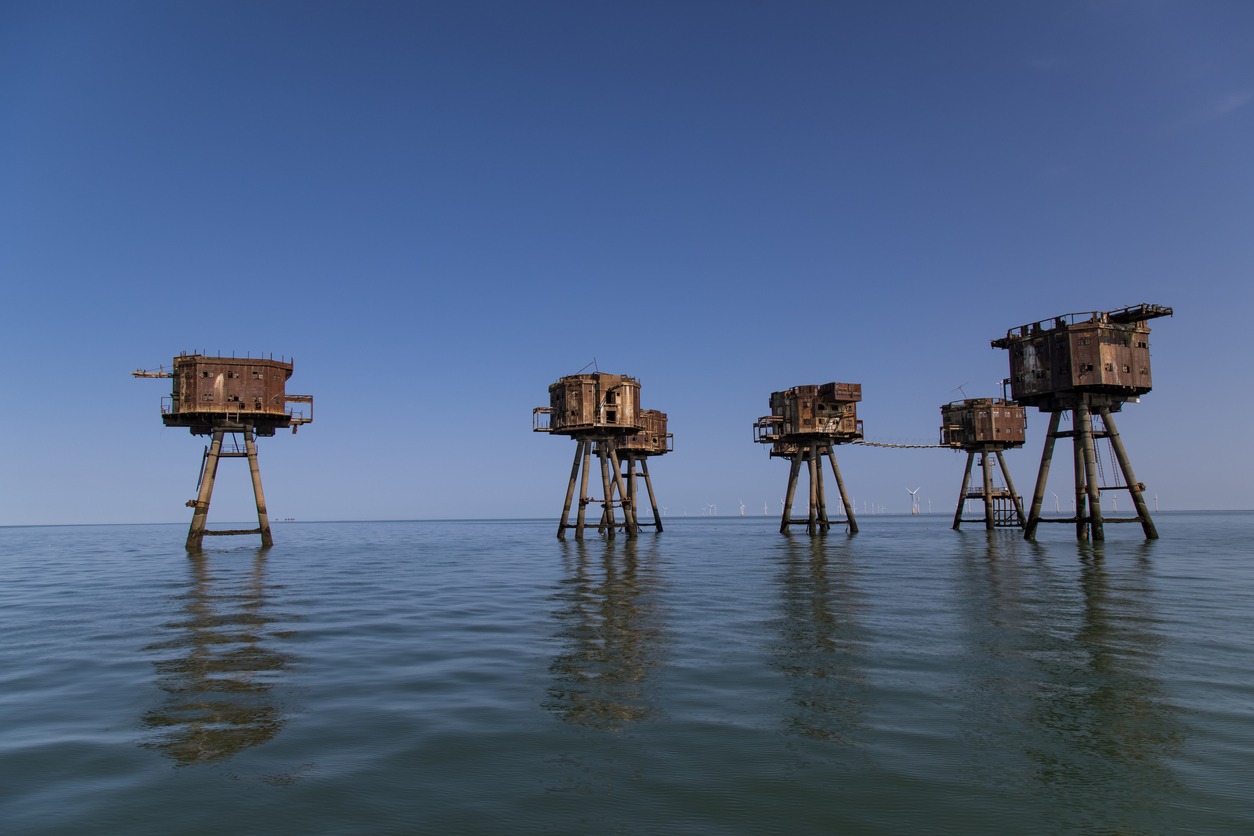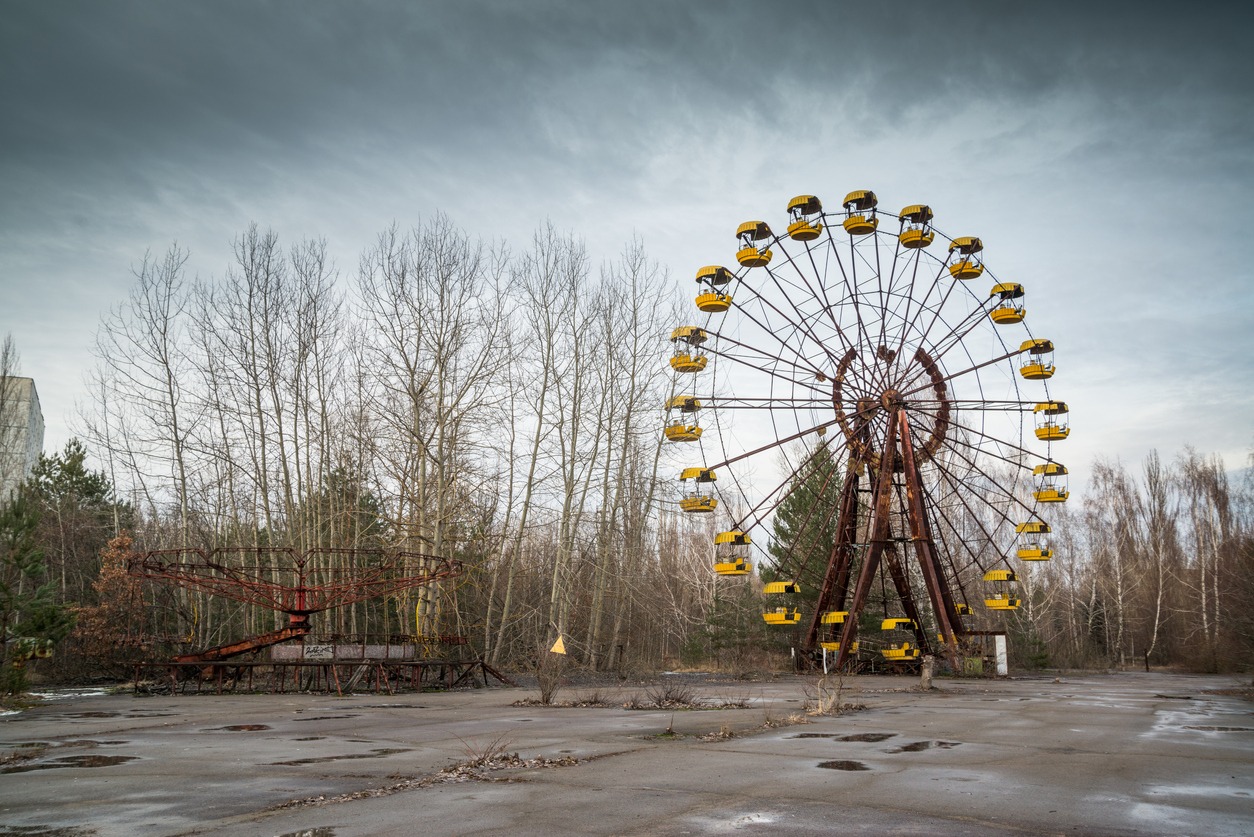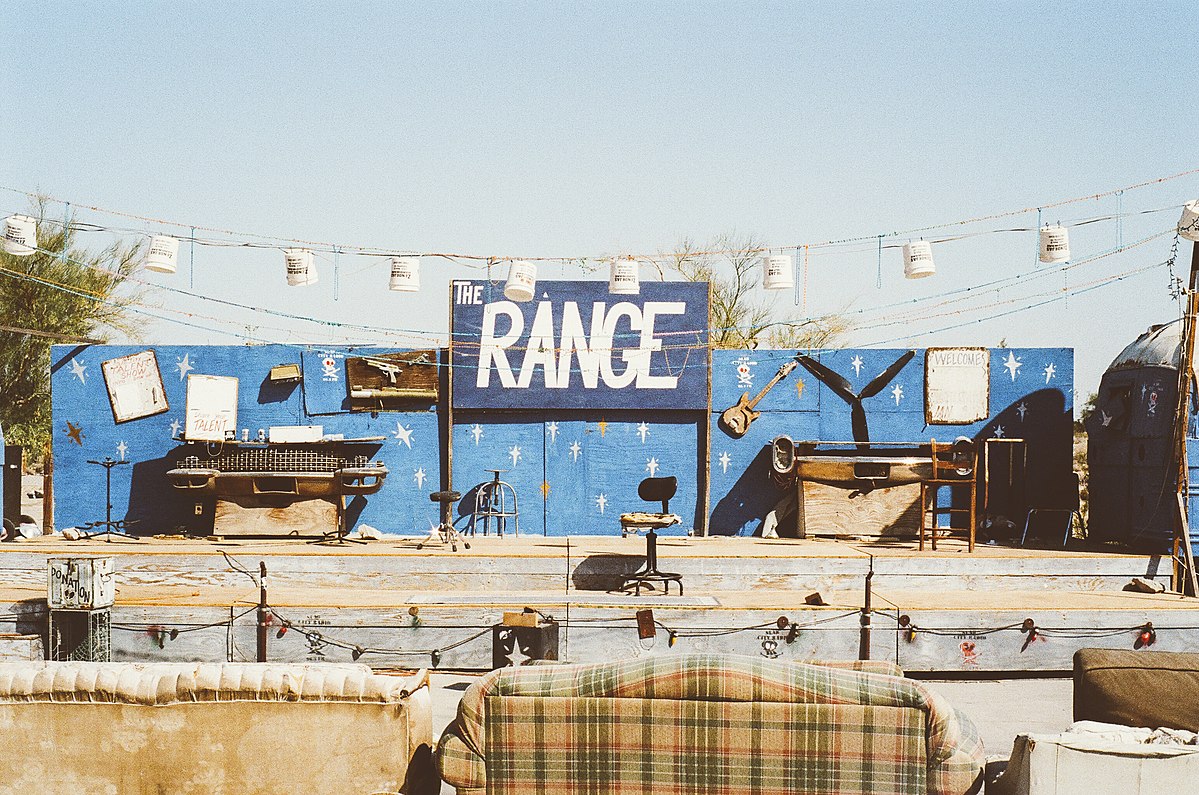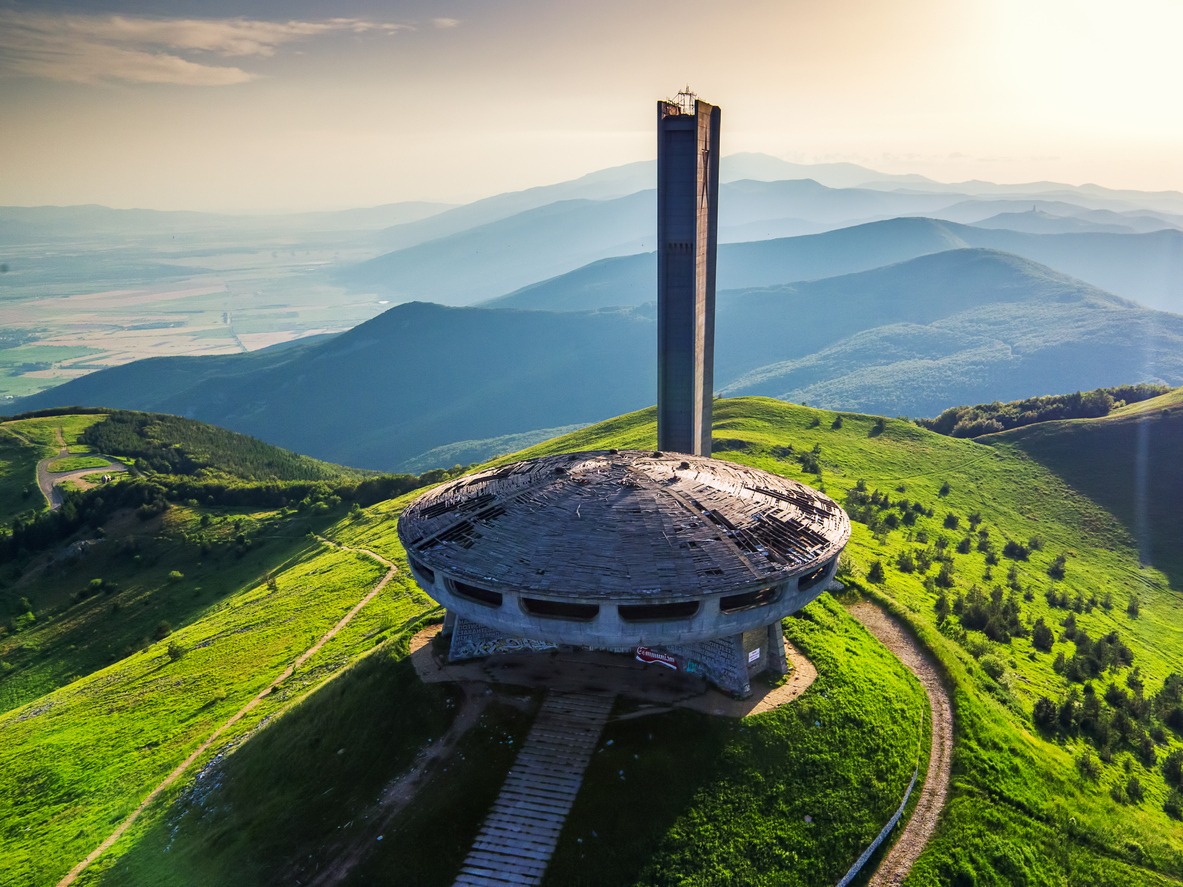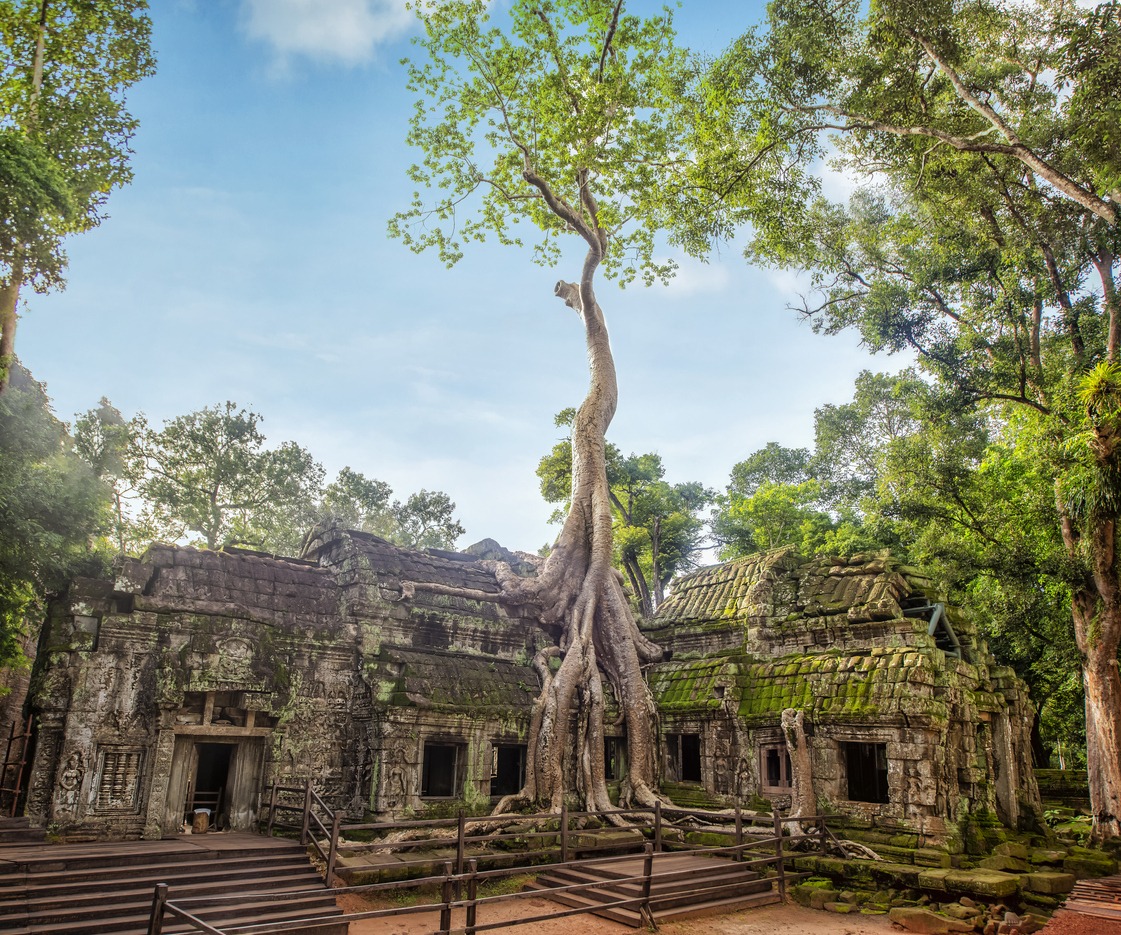Throughout history, people have built structures like factories, hospitals, prisons, military forts, and houses. They were once opened and flourished with life inside them. But some of them, at some point, were left abandoned, never to be reoccupied, creating a haunting, deserted space with its own unique story.
While we humans are obsessed with progress, buildings and places that are left to deteriorate seem to fascinate us. Whether it’s the sight of trees growing in concrete, ghost towns in the middle of the desert, or deserted mine shafts reclaimed by nesting birds – it reminds us about the perseverance of nature.
These sites are haunting but alluring abandoned places in the world:
Battleship Island, Japan
It’s not technically a battleship, and it’s not quite an island, but from afar, it looks like both. Battleship Island, also known as Hashima Island near Nagasaki, Japan, is known for its intriguing, desolate appearance. Sitting over 10 miles off the coast of Nagasaki, it’s known for its abandoned concrete structures and a sea wall.
Back then, this was a forced labor site for Chinese and Korean workers before and during World War II. Deserted in 1974, it’s now a ghostly landscape where you can see cracked concrete, crumbling plaster, and posters peeling off bedroom walls. You can still see remnants of past lives here: shoes were still there where they were kicked off, and newspapers were littering the floor – giving snapshots of frozen lives.
Eastern State Penitentiary, Philadelphia, USA
The Eastern State Penitentiary in Philadelphia was once the world’s most expensive and innovative prison. Operating from 1829 to 1971, it was called the world’s first true penitentiary. It was designed to force criminals closer to god through torture, solitary confinement, and enclosure in cold cellblocks. It housed famous inmates like gangster Al Capone, bank robber Slick Willie, and Pep the Cat-Murdering Dog – an actual dog who allegedly killed the governor’s wife’s cat in 1924.
After its closure, the site fell into disrepair but is now a National Historic Landmark open for tours, showcasing its crumbling cellblocks and visibly once-grand architecture. Notably, the prison grounds also contain tunnels dug by inmates trying to escape. This hauntingly empty penitentiary reflects a history of ambition and reform in prison design.
Beelitz Sanatorium, Germany
The Beelitz Sanatorium in Germany, a sprawling 60-building complex originally designed for tuberculosis patients in the late 19th century, has a storied past. It served as a hospital for Adolf Hitler during World War I and later as a Nazi hospital in World War II. Post-war, it became a Soviet military hospital until 1994, when the Soviet Union collapsed. It has been abandoned and largely unused since then.
Although largely deserted, it attracts visitors with its hauntingly empty wards and corridors. Weekend wanderers, inspired photographers, and curious travelers keep going back to the decayed aesthetic of this site. In 2015, a treetop pathway was added to allow safe viewing of this historically charged and eerie site.
Salton Sea Beach, California
Located in the middle of California’s Colorado Desert, the Salton Sea Beach was transformed from a desert valley to a thriving lake resort before it got flooded by the Colorado River in 1905. In the 1950s, it became a resort, with towns built along its shoreline. The area was once thriving, with vacationers, swimmers, and fishers looking for a good time, attracting 1.5 million people annually.
But in the 1970s, severe storms destroyed towns and businesses on the shore. Over time, agricultural runoff made the lake very polluted and salty. Fishes died, birds became ill, and visitors took their pleasure elsewhere. Due to environmental troubles, residents moved out, and it got fewer and fewer visitors, making it close to a ghost town.
Bodie Ghost Town, California, USA
Bodie proudly labels itself as a “town frozen in time,” meticulously preserved by California State Parks. Established by prospectors enticed by the California Gold Rush in the mid-1800s, Bodie thrived as a mining town filled with fortune-seekers, saloon shootouts, and barroom brawls. In its heyday, it housed around 10,000 residents, flourishing with numerous structures, including a Wells Fargo Bank, fire stations, newspapers, opium dens, a rail depot, a jail, and a staggering 65 saloons.
However, its prosperity was short-lived. By the 1890s, the California Gold Rush had eventually lured prospectors away, leading to the closure of the last mine in 1942. Designated a National Historic Landmark in the 1960s, Bodie now attracts tourists eager to stroll through its deserted streets and witness the arresting decay of this ghost town.
Varosha, Cyprus
Varosha is an example of a neighborhood that fell from grace. Once a bustling resort area in Famagusta, it is now a ghost town, abandoned since 1974 after the Turkish invaded the area and residents were forced into a life of exile. High-rise buildings are now dilapidated, hotels and front shops boast the latest 70s fashion, and classic cars are corroding in its streets.
While parts of Varosha, including the beach, are accessible, the majority of the quarter remains closed off. Once a favorite urban destination of the rich and famous, people can only glimpse through a barbed wire.
San Juan Parangaricutiro, Mexico
In 1943, the Paricutin volcano started successive eruptions, slowly engulfing houses, streets, and livelihoods. After it stopped erupting, it had already devastated two villages that sat in its shadow. The lava buried the entire villages, except the bell tower of the San Juan Parangaricutiro church – the only survivor of a nine-year-long eruption.
Today, this isolated site continues to draw tourists, who marvel at the still intact, though vacant, altar inside the church.
Maunsell Forts, England
When seen from a distance, the Maunsell Forts resemble props from a Star Wars movie. Constructed during World War II in the estuaries of the Thames and Mersey rivers, it was designed to safeguard England against potential air attacks from Nazi Germany. After their decommissioning, some forts met their demise from collisions with ships, while others found a new purpose as pirate radio stations in the 1960s and 1970s.
Notably, Paddy Roy Bates seized Roughs Tower, a Maunsell Fort with a unique design, in 1967 and established the Principality of Sealand. However, the rest of the towers have remained uninhabited. For the past three decades, the Maunsell Forts succumbed to rust and became abandoned and largely ignored.
Pripyat, Ukraine
Situated over 90 miles from Kyiv, the Ukrainian town of Pripyat is located right next to the Chernobyl nuclear plant. The infamous nuclear disaster in 1986, marked by the explosion of one of the reactors, forced the evacuation of over 115,000 people. After the Chernobyl disaster, Pripyat’s entire population was evacuated within four hours, transforming their town into a ghostly landscape haunted by the memory of the nuclear catastrophe. For decades, Pripyat has remained uninhabited.
Today, curious travelers have the opportunity to explore this eerie city as part of a tour group, ensuring the necessary safety precautions are taken. With radiation levels still too high for human habitation, the city remains frozen in time. The desolation is tangible in the vast expanse of snow-covered emptiness.
Tillamook Rock Lighthouse, Oregon, USA
Tillamook Rock Lighthouse, located off the Oregon coast, earned its nickname “Terrible Tilly” due to its challenging location and the harsh conditions lightkeepers experience during their shifts. It was actually terrible from the start – in 1881, when the building was about to be completed, a boat wrecked at the base, killing all its 16 crew members, with the crew’s dog as the only survivor.
In the following years, heavy storms severely damaged the lighthouse and eroded the rock it stood upon, as it was perched on a rugged volcanic rock. It was finally decommissioned in 1957 and is currently being used as a repository for the ashes of the deceased who wished to rest at sea. It stands as a part of the Oregon Islands National Wildlife Refuge and is listed on the National Register of Historic Places.
Slab City, California, USA
Just a short 20-mile drive from Bombay Beach, Slab City is located outside Niland in the remote area of California’s Colorado Desert. Initially, a World War II Marine Corps base known as Camp Dunlap was abandoned after the war, leaving behind concrete slabs used for experiments. Seizing the opportunity, squatters claimed the space, using the slabs to construct their makeshift homes.
Today, Slab City remains a unique community, attracting squatters, snowbirds, drifters, and homeless people. The area has no electricity, running water, sewers, toilets, trash service, law enforcement, and taxation. It is known for its unconventional attractions, including the vibrant Salvation Mountain featured in Ke$ha’s music video for “Praying,” as well as East Jesus, an art installation crafted from recycled materials, and The Range, an open-air nightlife venue.
Six Flags, New Orleans, USA
Located in the Big Easy, Six Flags New Orleans was once a thriving theme park before Hurricane Katrina wreaked havoc on the Gulf Coast in 2005. Devastatingly, approximately 80 percent of the city, including the 162-acre amusement park, was submerged. The property endured seven feet of saltwater flooding for over a month. While some attractions were salvaged, the majority were deemed irreparable, leading to the indefinite closure of the park.
Despite various redevelopment proposals that ultimately fell through, the city explored the possibility of demolishing the site in the summer of 2019. However, the estimated cost of $1.3 million has posed a significant challenge to any plans for revitalization. Left abandoned, the grounds are now overgrown with vegetation, strewn with debris, covered in graffiti, and in a state of disrepair. Because of its eerie atmosphere, it has become a popular filming location for movies, including “Dawn of the Planet of the Apes” and “Jurassic World.”
Walled City of Chongwu, China
The walled city of Chongwu in Fujian, China, is not as famous as the Great Wall north of Beijing, but it offers a unique glimpse into the country’s rich history beyond the famous Great Wall. This historic city was an integral part of the ancient Maritime Silk Road and was built to defend against Japanese pirates during the Ming Dynasty.
Today, its wall has been restored and become a popular attraction that locals enjoy for weekend getaways, complete with scenic walks along the beach and beautiful views of the Taiwan Strait.
Buzludzha Monument, Bulgaria
Constructed in 1981, the Buzludzha Monument serves as a commemoration of the secret socialist meetings preceding the establishment of the Bulgarian Communist Party. It is peculiarly shaped like a flying saucer, making it a unique attraction.
Since 1989, the government has ceased maintenance of the monument, leaving it abandoned. Today, it stands as a testament to the angular, concrete architecture that characterizes the Soviet aesthetic, embodying a relic of a bygone era.
Ta Prohm Temple, Cambodia
Cambodia is a mysterious and magical space, and one of the tangible examples of that is the Ta Prohm Temple. Built in the 12th century, it is probably one of the most photographed spots in Angkor Wat. This awe-inspiring spectacle owes its breathtaking scene to being abandoned for centuries, as the local silk, cotton, and strangler fig trees have already merged with temple stones. The Ta Prohm Temple embodies the striking fusion of man-made and natural landscapes.
While it’s true that these architectural wonders within Angkor Wat are far from abandoned in modern times, the story of the Angkor Empire, embodied by Ta Prohm Temple, remains an enduring and fascinating tale.
